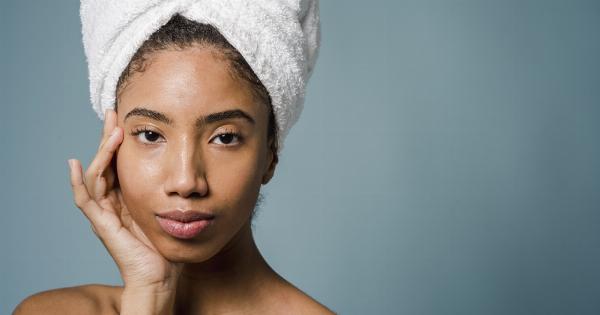Dandruff is a common scalp condition that affects many people worldwide. It is characterized by scaling, itching, and flaking of the scalp. Although dandruff is not a serious medical condition, it can be embarrassing and uncomfortable.
The good news is that there are many ways to achieve a flake-free scalp during bathing. In this article, we will discuss some of the most effective methods of controlling dandruff during bathing.
What causes dandruff?
Dandruff is caused by a variety of factors, including:.
- Fungal infections
- Stress
- Dry skin
- Poor diet
- Excessive oil production
- Hormonal imbalances
- Environmental factors
The exact cause of dandruff is not fully understood, but there are many effective treatments available to control it.
Choose the right shampoo
Choosing the right shampoo is crucial to achieving a flake-free scalp. Look for shampoos that contain active ingredients such as salicylic acid, coal tar, selenium sulfide, or ketoconazole.
These ingredients help to control the growth of fungi and reduce inflammation.
It is also essential to use the correct shampooing technique. Avoid using too hot water, which can dry out the scalp, and instead use lukewarm water. Massage the shampoo into your scalp gently, using circular motions.
Rinse thoroughly to remove all traces of shampoo from your scalp and hair.
Use a medicated conditioner
Using a medicated conditioner can help to control dandruff during bathing. Look for conditioners that contain ingredients such as tea tree oil or menthol. These ingredients help to soothe the scalp and reduce inflammation.
Apply a small amount of conditioner to your hair and scalp, focusing on the ends of your hair. Leave the conditioner on for a few minutes before rinsing thoroughly.
Use an exfoliating scalp scrub
Exfoliating your scalp with a scrub can help to remove dead skin cells, which can lead to dandruff. Look for scrubs that contain natural ingredients such as sea salt, sugar, or finely ground walnut shells.
Apply the scrub to your damp scalp, using gentle circular motions. Rinse thoroughly and follow up with your regular shampoo and conditioner.
Treat your scalp with apple cider vinegar
Apple cider vinegar contains acetic acid, which has been shown to help control dandruff. Mix two tablespoons of apple cider vinegar with one cup of water and apply the mixture to your damp scalp.
Leave the mixture on your scalp for a few minutes before rinsing thoroughly with lukewarm water.
Apply a coconut oil mask
Coconut oil is an excellent natural remedy for dandruff. It contains lauric acid, which has antifungal properties that help to control the growth of fungi on the scalp.
Apply a few teaspoons of coconut oil to your scalp and massage gently. Leave the oil on your scalp for at least 30 minutes before washing off with your regular shampoo.
Control stress levels
Stress can trigger dandruff and worsen its symptoms. Therefore, it is essential to manage your stress levels to control dandruff. You can do this by practicing deep breathing exercises, yoga, or meditation.
Eat a balanced diet
Diet plays a significant role in the health of your scalp. A diet that is rich in essential fatty acids, vitamins, and minerals can help to control dandruff. Include foods such as salmon, avocado, nuts, and leafy green vegetables in your diet.
Avoid using styling products
The chemicals in styling products such as hairspray, gel, or mousse can irritate the scalp and worsen dandruff. Therefore, it is best to avoid using these products if you have dandruff.
By following these tips, you can achieve a flake-free scalp during bathing. If dandruff persists, consult a dermatologist for further evaluation and treatment.































